Introduction
The complexity of legal and regulatory requirements in Employee Stock Ownership Plans (ESOPs) cannot be overstated. For businesses considering this route, understanding and adhering to these requirements is not just a matter of legal necessity but also foundational to the plan’s success and sustainability.
ESOP Legislation and Regulation
At the heart of ESOP governance are two critical bodies of law: The Employee Retirement Income Security Act (ERISA) and the Internal Revenue Code. ERISA is designed to ensure that ESOPs are set up and operate in a manner that protects the employees’ retirement benefits, while the Internal Revenue Code provides the tax framework within which ESOPs must operate. Navigating these laws requires not only a deep understanding of their provisions but also an awareness of how they interact with each other.
Setting Up an ESOP: Legal Requirements
The journey to establishing an ESOP is paved with numerous legal steps and requirements. Central to this process is the creation of a plan document that aligns with ERISA and tax laws. This stage often necessitates the involvement of legal counsel, particularly attorneys who specialize in ESOPs. Their expertise is invaluable in ensuring that the ESOP is compliant from the outset, laying a solid foundation for its future operation.
Ongoing Compliance for ESOPs
Once an ESOP is established, the focus shifts to maintaining compliance. This involves regular reporting and disclosure responsibilities. ESOPs are required to file specific forms with government agencies and provide plan participants with detailed information about their ESOP accounts. These steps are not just bureaucratic formalities; they are crucial in maintaining transparency and trust within the ESOP framework.
Fiduciary Responsibilities
A key aspect of managing an ESOP is adhering to fiduciary responsibilities. ESOP fiduciaries are tasked with acting solely in the interest of plan participants. This means making prudent decisions regarding the management of plan assets and ensuring that these decisions benefit the participants. The role of a fiduciary is integral to the trust and integrity of the ESOP.
Common Legal Challenges and Solutions
ESOPs can face challenges such as potential plan mismanagement and keeping up with regulatory changes. To combat these, regular audits and consultations with ESOP experts are vital. Staying informed about changes in regulations and adapting the ESOP accordingly are also critical to avoid compliance issues.
Staying Updated with Regulations
Keeping up-to-date with regulatory changes in the ESOP landscape is essential. This can be achieved by subscribing to relevant publications and maintaining regular consultations with legal experts specializing in ESOPs. These practices help ensure that the ESOP stays compliant and effective in achieving its goals.
Conclusion
Successfully navigating the legal and regulatory aspects of ESOPs is crucial for any business considering this path. It requires a commitment to proactive legal planning and continuous compliance. With the right approach and expertise, businesses can leverage ESOPs effectively while ensuring legal and regulatory integrity.

